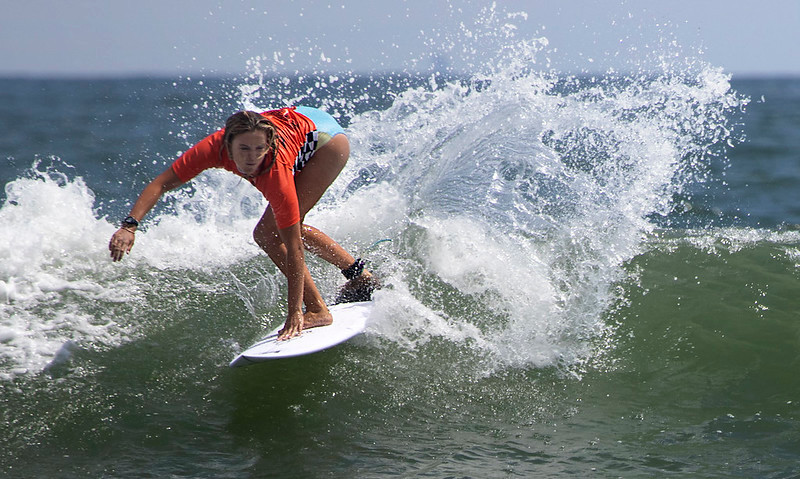
Atlantic Ocean waves at Virginia Beach are high enough for the annual East Coast Surfing Championships
Source: Watts, East Coast Surfing Championships - Virginia Beach Va

Atlantic Ocean waves at Virginia Beach are high enough for the annual East Coast Surfing Championships
Source: Watts, East Coast Surfing Championships - Virginia Beach Va
Virginia has sandy beaches next to the ocean. Virginia also has a "fetch" where wind can blow over thousands of miles of ocean, just like Hawaii and California.
The shape of the ocean floor off Virginia and North Carolina is too gentle to generate the big waves for which Kauai and Malibu are famous, but still creates some of the best waves on the eastern seaboard. Surfers began to ride the waves at the Outer Banks by 1909, just two years after surfing was popularized by exhibitions in California, and Hawaiians demonstrated surfing in 1928 at Roanoke Island.
The broad rise in popularity on the East Coast was triggered by California-based movies in the 1950's and early 1960's, especially "The Endless Summer" in 1965. In 1966, the Nags Head Surfing Association formed. The Eastern Surfing Association Championship ("the Easterns") were first held at Buxton in 1971, and the U.S. Surfing Championships brought West Coat competitors to Buxton in 1974. Surfboards at the time were made from juniper wood, prior to the adoption of foam and fiberglass.1
The first surfboard used at Virginia Beach was made of redwood. It was 12 feet long and weighed 100 pounds.
Virginia Beach has hosted the East Coast Surfing Championships since 1963, making it the "oldest continuous-running surfing competition in the country." The surfers who created the event met at Long Island, at the first East Coast Surf event on Gilgo Beach in 1962, and they decided Virginia Beach should host it the next year.
Pete Smith and Bob Holland opened Virginia Beach's first surf shop in 1963, and Hobie Alter chose it to sell his boards on the East Coast. What was originally the Virginia Beach Surfing Festival became the East Coast Surfing Championships in 1965, and Virginia Beach evolved into the epicenter of East Coast surfing and stand-up paddleboarding. The area around First Street and the Steel Pier (now gone) became known as a "two-block surfing insane asylum."2
"Surfing's East Coast Boom," the cover story of Sports Illustrated in June, 1968, noted that the Virginia Beach waves were only three feet high, but they were constant and suitable for learning trick maneuvers. Local surfers suggested they had one of the world's greatest training grounds for developing surfing talent. The downside of having waters packed with young surfers was a lifeguard's complaint that someone was always getting zonked with a loose board.
The limited size of the waves may help make surfers appreciated them more. Experienced surfers have multiple boards, allowing selection of the right size and shape for different wave conditions. As described by one writer:3
The current sponsors of the East Coast Surfing Championships, the Junior Chamber of Commerce (Jaycees), have expanded the surfing championship weekend into a week-long event with land-based activities, including skateboarding and BMX biking. The city has contributed $10,000 annually for marketing, and in return the East Coast Surfing Championships has generated $1.2 million in taxes (plus over $14 million in economic activity in the area) at a time when few tourists normally visit Virginia Beach.
The president of the Virginia Beach Hotel-Motel Association noted the economic impact in 2014, after the city doubled its fees for providing services such as police patrols and trash collection:4
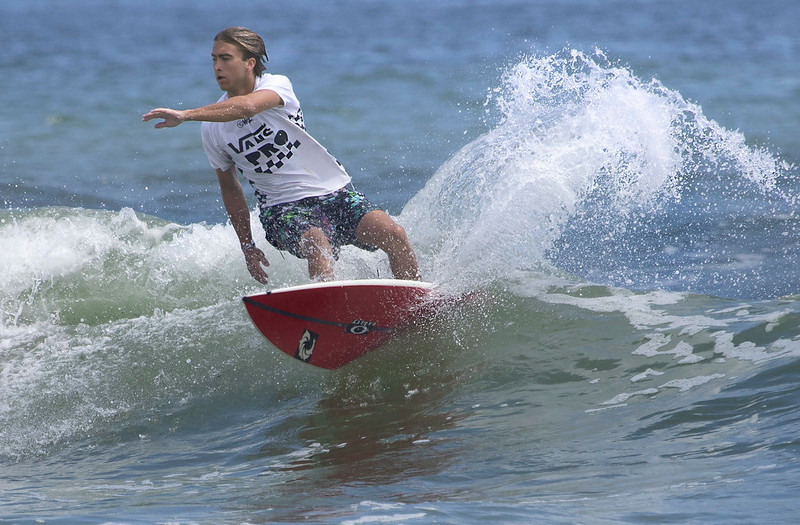
the East Coast Surfing Championships were scheduled for August 18-24 in 2024, right after students returned to school
Source: Watts, East Coast Surfing Championships - Virginia Beach Va
The city decision to double fees in 2014 was part of an overall increase for the over-500 events scheduled each year, reflecting increased costs for city services. The Jaycees responded by threatening to stop sponsoring the East Coast Surfing Championships, because the fee increase (from $40,000 to $77,000) would increase the costs to host the event by over 7% and absorb the profits generated for charity.
In 2019, the event generated more economic activity than any other festival or marathon in Virginia Beach.
All plans changed in 2020, after the COVD-19 pandemic limited crowds. Activities such as a volleyball tournament and a motocross showcase, which had spread across 10 city blocks, were cancelled.
The 2020 East Coast Surfing Championships were limited to a maximum assembly of just 50 staff and surfers, with no spectators. A week of surfing involved rotating the 200 contestants through defined spaces, with no more than 10 at a time in the water. The space required for the scaled-down event used just one-half city block.5
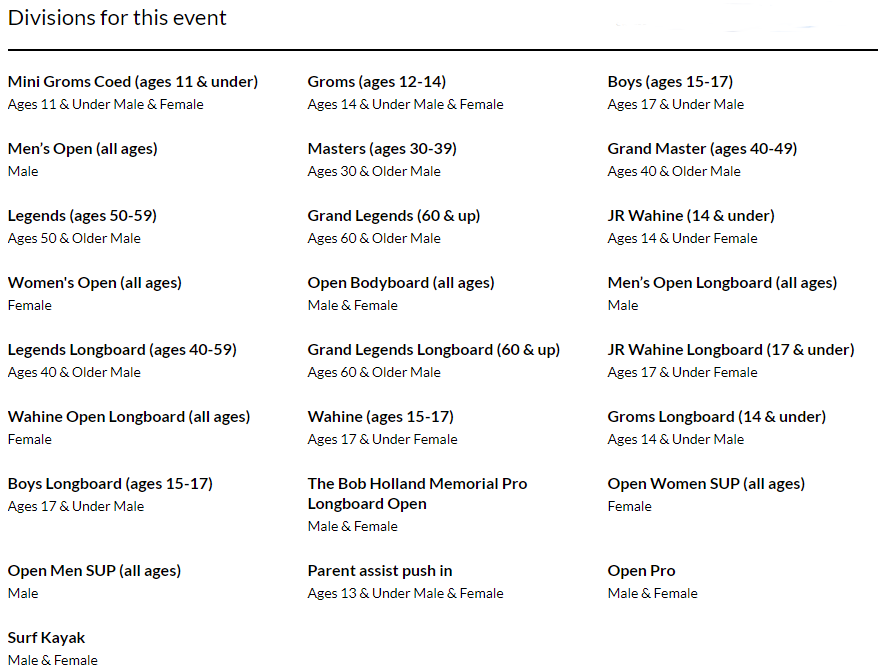
there were multiple divisions for contestants in the 2020 East Coast Surfing Championships, but no crowds of spectators
Source: East Coast Surfing Championships, The Virginia Beach Jaycees Present the 58th Annual Coastal Edge East Coast Surfing Championship (August 25-30, 2020)
Hurricane Erin in 2025 was expected to generate larger waves, but the 63rd Annual Coastal Edge East Coast Surfing Championships (ECSC) had to be interrupted due to the expected storm surge. Facilities on the beach between the 1st Street Jetty and 10th Street were removed for a day, then reinstalled.
On New York City beaches, Erin brought spectacular surfing opportunities and waves reached nearly 20' high at the peak. For at least a day beaches were closed to swimming and other activities, with one exception:6
Atlantic Park Surf also opened at Virginia Beach in August, 2025. Four types of artificial waves (Cruiser, Turns, Barrel and Air) could be generated in the 3.5 million gallon pool for seven different skill levels of surfers. The machinery could generate as many as 1,000 waves per hour, ranging from one to six feet high.
The surf park was a key component of Atlantic Park, a $350 million mixed-use development. It was 1/3 funded by the City of Virginia Beach., and designed to create a resort beach environment that would attract people independent from temporary weather conditions. The new live-work-play community on 10 acres included The Dome, a 3,500-seat entertainment venue.
The surf park concept was initially developed as a thesis by an architecture student at Virginia Tech. Surf training was intended to also be a spectator sport, with passes sold for just watching people practice on the waves.7
The value of the surf park was summarized in a headline published over seven years before Atlantic Park Surf actually opened:8
Even dogs go surfing at Virginia Beach. In the 2025 Wags for Waves competition, which was designed to support dog shelters and animal adoptions, a golden retriever won the solo category. A chihuahua, surfing with a human, won the tandem category.9
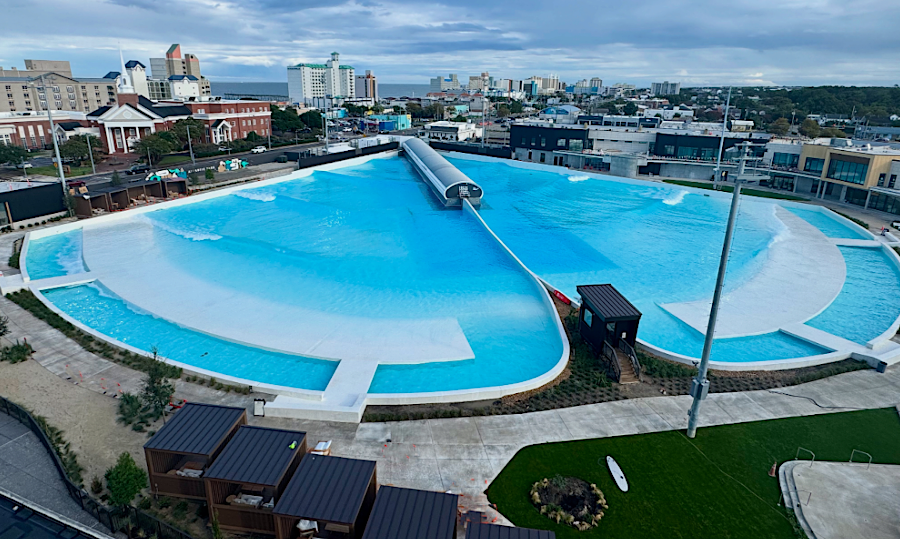
Atlantic Park Surf offered opportunities for practice on artificial waves 1-6' high by surfers ranging from beginner to professional, independent from ocean conditions
Source: Atlantic Park Surf
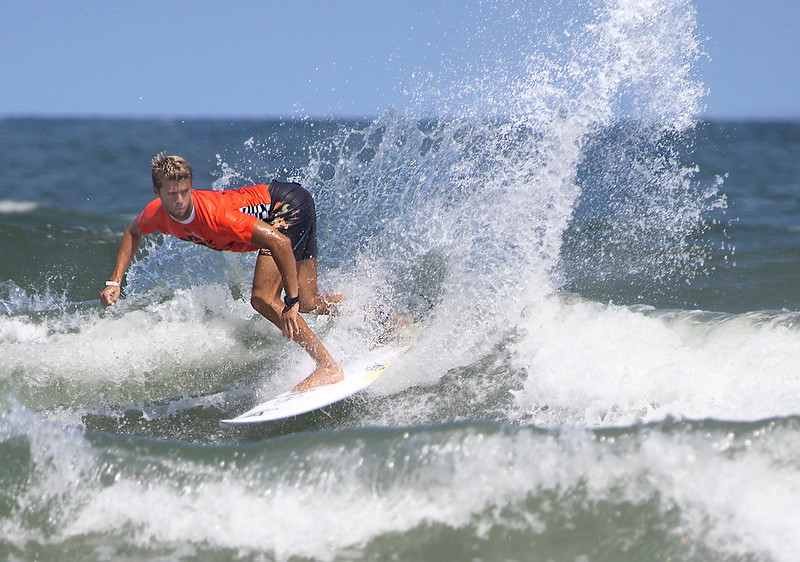
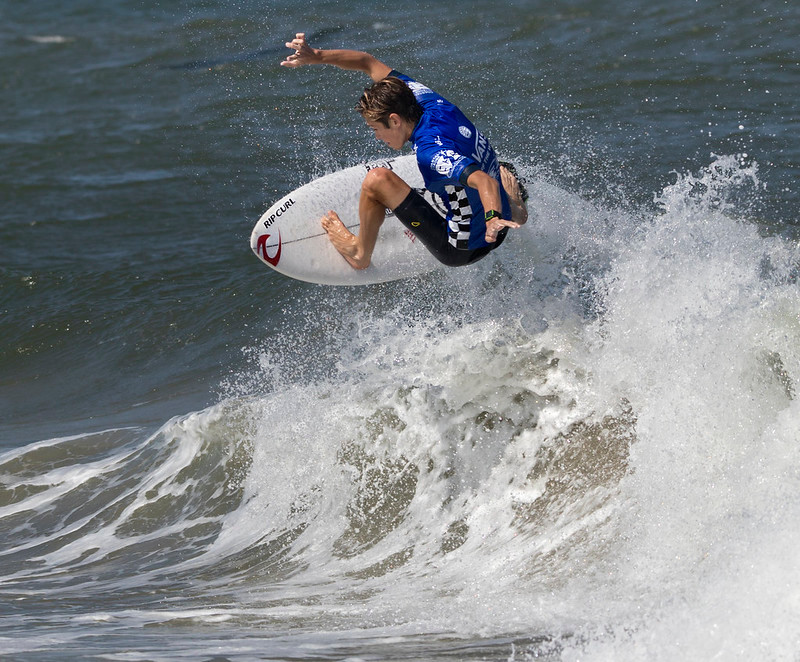
waves at Virginia Beach bear little resemblance to the massive breakers at famous surfing spots, but still offer a healthy challenge
Source: Watts, East Coast Surfing Championships - Virginia Beach Va; 2-18 ECSC
Hurricane Erin briefly interrupted the 2025 championship
Source: East Coast Surfing Championships, About Us (August 25-30, 2020)